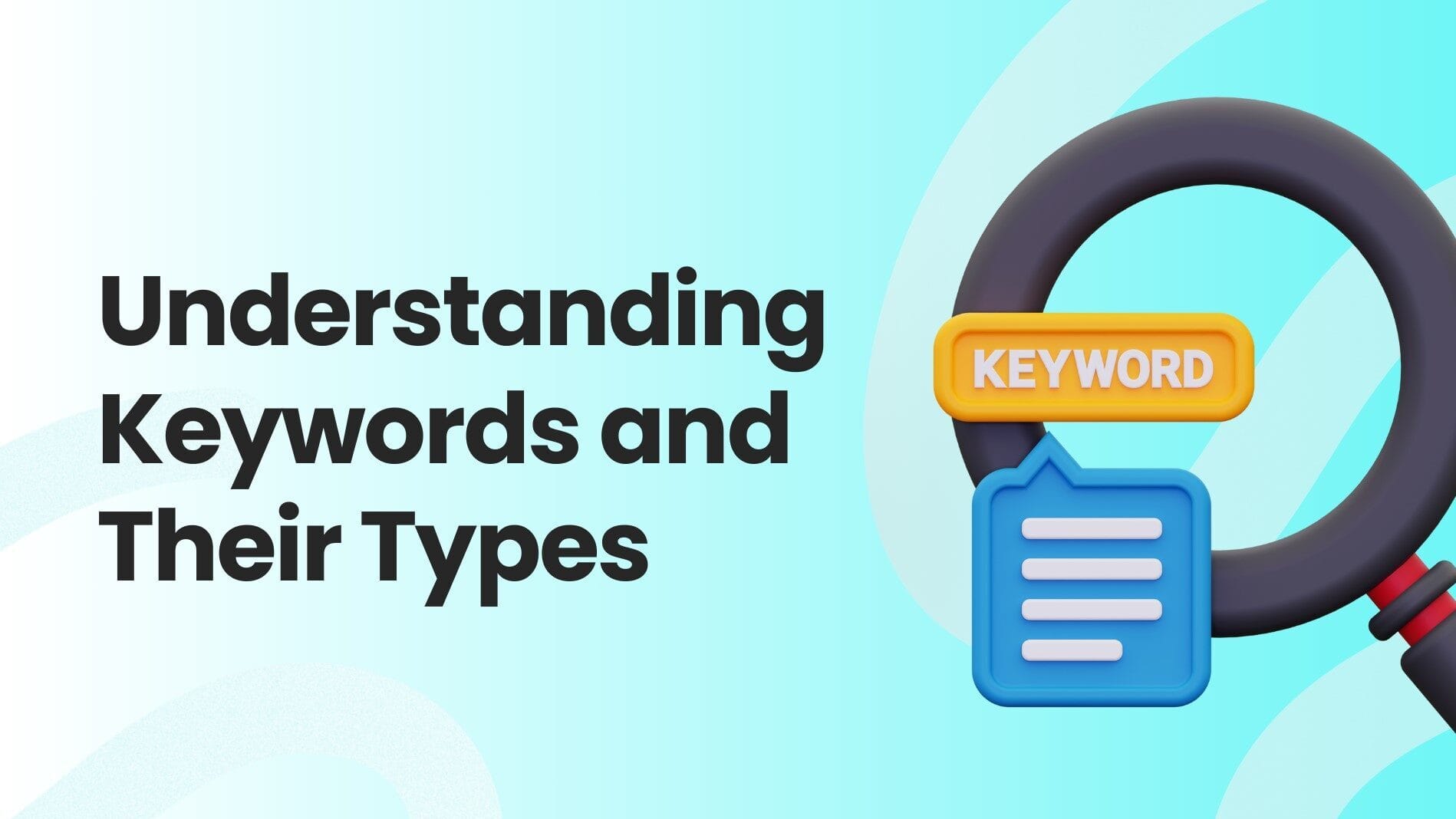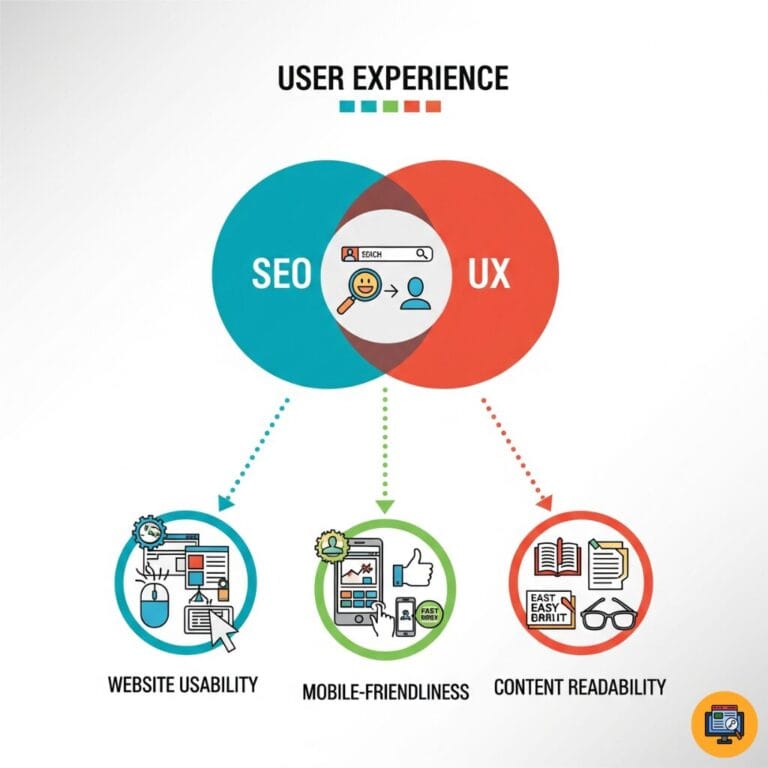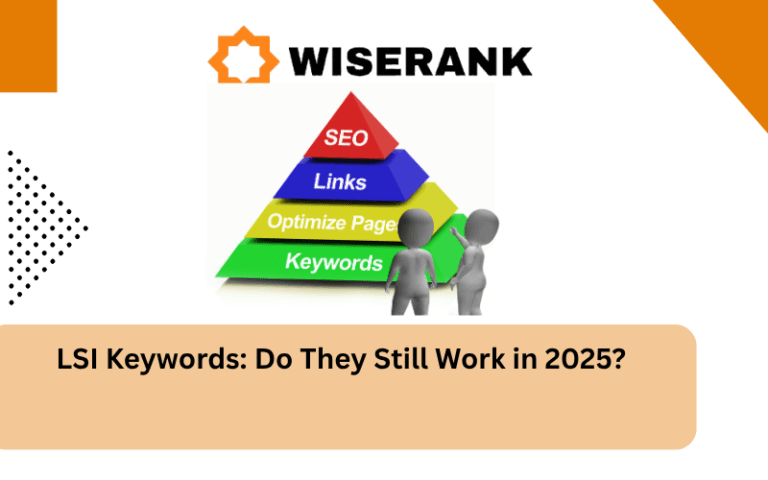What Is Keyword Placement? (The Foundation of SEO Success)
Keyword placement refers to the strategic positioning of target keywords throughout your webpage content. It involves placing your primary and secondary keywords in specific locations where search engines expect to find them.
Proper keyword placement helps search engines understand what your page is about. It also makes your content more relevant to user searches. When done correctly, strategic keyword positioning improves your chances of ranking higher in search results without appearing spammy.
Why Keyword Placement Matters for SEO: Rank Higher with Smart Strategy
Search engines like Google analyze where keywords appear on your page to determine relevance and quality. The location of your keywords sends signals about what your content covers and how well it matches search intent. Pages with well-placed keywords typically outperform those where keywords are scattered randomly or stuffed unnaturally. Google’s algorithm has become sophisticated enough to recognize natural language, but strategic placement still provides important context clues that help your content rank better.
Understanding Keyword Types: Know What You’re Targeting
Before placing keywords, you need to understand the different types and their purposes. Each keyword type serves a specific role in your SEO strategy.

Primary Keywords: Your Main Target
Your primary keyword is the main search term you want to rank for. It represents the core topic of your page. Every webpage should target one primary keyword that appears in the most important locations.
Secondary Keywords: Supporting Terms That Boost Rankings
Secondary keywords are related terms that support your main topic. They help you cover the subject more comprehensively. These variations and related phrases make your content more valuable while avoiding keyword repetition.
Long-Tail Keywords: Lower Competition, Higher Conversions
Long-tail keywords are longer, more specific phrases that usually have lower search volume but higher conversion rates. They often appear naturally when you write detailed, helpful content. These keywords typically face less competition and attract users with clear intent.
LSI Keywords: Context & Relevance Signals
Latent Semantic Indexing keywords are terms related to your main topic. They help search engines understand context and meaning. LSI keywords include synonyms, related concepts, and terms that commonly appear together in high-quality content about your subject.
The Most Important Places for Keywords: Strategic Locations That Matter
Certain locations on your webpage carry more weight than others. Placing keywords in these strategic spots maximizes their SEO impact.
Title Tag: The #1 Most Powerful Location
Your title tag is the single most important location for your primary keyword. Search engines give heavy weight to title tags when determining page relevance. Place your main keyword near the beginning of your title tag for maximum impact.
The title tag appears in search results as the clickable headline. When users see their search terms in your title, they are more likely to click. Keep title tags between 50 and 60 characters to ensure they display fully in search results.
Meta Description: Drive Clicks with Keyword Placement
While meta descriptions do not directly affect rankings, they influence click-through rates. Include your primary keyword naturally in the meta description to show users your page matches their search.
Google often bolds keywords in meta descriptions that match the user’s query. This visual emphasis catches attention and increases the likelihood of clicks. Keep meta descriptions between 150 and 160 characters for optimal display.
H1 Heading: Signal Your Main Topic Clearly
Your H1 heading should contain your primary keyword. This main heading tells both users and search engines what your page is about. Most websites automatically use the page title as the H1, which is the correct approach. Use only one H1 per page.
Having multiple H1 tags can confuse search engines about your main topic. Make your H1 clear, descriptive, and compelling to keep visitors engaged.
URL Structure: Clean, Keyword-Rich URLs That Rank
Include your primary keyword in the page URL. Clean, descriptive URLs help search engines and users understand page content before even visiting. Short URLs with keywords perform better than long URLs with numbers or irrelevant characters.
Keep URLs simple and readable. Use hyphens to separate words rather than underscores. Avoid adding unnecessary words that dilute your keyword presence in the URL.
First Paragraph: Hook Readers & Search Engines Early
Place your primary keyword in the first 100 words of your content. This early placement signals to search engines that your content immediately addresses the topic. It also reassures readers they have found the right page.
Make this first mention natural and contextual. Do not force the keyword if it creates awkward phrasing. The opening paragraph should engage readers while establishing topical relevance.
Subheadings: Structure Your Content with Keywords
Distribute your primary and secondary keywords across H2 and H3 subheadings. These headings structure your content and provide additional signals about your topics and subtopics.
Not every heading needs a keyword. Use them where they fit naturally and add value. Question-based headings often incorporate keywords naturally while matching how users search.
Image Alt Text: Describe Images with Keywords
Alt text describes images for search engines and visually impaired users. Include relevant keywords in alt text when they accurately describe the image content. Never force keywords into alt text for images they do not describe.
Alt text should be descriptive and helpful first. If your target keyword naturally fits the image description, include it. Otherwise, use related terms that accurately represent what the image shows.
Body Content: Natural Keyword Distribution Throughout
Your main content should include your primary keyword naturally throughout. Aim for natural usage rather than hitting a specific keyword density percentage. Modern SEO focuses on topic coverage rather than exact keyword frequency.
Conclusion Section: Reinforce Your Topic One Last Time
Mention your primary keyword again in your conclusion. This final mention reinforces your topic while providing a natural place to summarize key points. The conclusion offers one last relevance signal to search engines.
Strengthen Your Strategy with Complete On-Page SEO Optimization
Placing keywords strategically within your titles, headings, and content helps search engines understand your page’s topic, but that’s just one part of a well-rounded On-Page SEO strategy. True on-page optimization goes beyond keyword placement to include meta tags, internal linking, image optimization, content structure, and user experience improvements. By aligning all these factors, you create a page that not only ranks higher but also provides real value to readers. To get the most out of your SEO efforts, make sure your keyword placement is supported by a comprehensive on-page SEO approach that enhances visibility, engagement, and conversions.
How Many Times Should You Use Keywords? Finding the Perfect Balance
There is no magic number for keyword usage. The right frequency depends on your content length and topic. Focus on natural usage rather than counting repetitions.

For a 1000-word article, your primary keyword might appear five to eight times naturally. A 2500-word guide might include it twelve to fifteen times. These are rough guidelines, not strict rules. Write for humans first, and keywords will appear naturally.
Understanding Keyword Density: Why It Doesn’t Matter Anymore
Keyword density measures what percentage of your total words is your target keyword. Old SEO tactics aimed for specific density percentages. Modern best practices ignore exact density in favor of natural language and comprehensive topic coverage.
Avoiding Keyword Stuffing: Stay Safe from Google Penalties
Keyword stuffing means overusing keywords in an unnatural way to manipulate rankings. Google penalizes this practice because it creates poor user experience. Stuffed content is hard to read and provides little value.
Signs of keyword stuffing include:
- Repeating keywords in every sentence
- Using keywords where they do not fit grammatically
- Creating lists of keywords without useful content
- Hiding keywords in the same color as your background
- Stuffing keywords into meta tags excessively
Write naturally and focus on helping users. If a sentence sounds awkward because you forced in a keyword, rewrite it. Clear, helpful content performs better than keyword-heavy content that sacrifices readability.
Using Keyword Variations: Keep Content Fresh & Readable
Keyword variations prevent repetition while maintaining relevance. They include synonyms, different word forms, and related phrases. Using variations makes your content more readable and comprehensive.
If your primary keyword is “keyword placement,” variations include:
- Placing keywords
- Keyword positioning
- Where to place keywords
- Strategic keyword placement
- Keyword location
Search engines recognize these variations as related to your main topic. Using them naturally throughout your content improves both SEO and readability.
Write First, Optimize Second: The Smart Approach
Create your initial draft focused on providing value and answering questions. After writing, review the content to ensure keywords appear in strategic locations. This approach produces more natural writing than trying to insert keywords while drafting.
Use Keywords in Context: Placement That Makes Sense
Place keywords where they make contextual sense. If you are explaining a concept, use the keyword when introducing or defining it. In examples or case studies, use keywords when they naturally describe the situation.
Use Keywords in Context: Placement That Makes Sense
Place keywords where they make contextual sense. If you are explaining a concept, use the keyword when introducing or defining it. In examples or case studies, use keywords when they naturally describe the situation.
Answer Questions with Keywords: Match User Intent
Structure some content sections as questions that include your keywords. Users often search in question format. When your headings match these questions, keywords appear naturally while improving your chances of ranking for question-based searches.
Include Keywords in Examples: Real-World Applications
When providing examples, use your keywords to describe the scenario. This creates natural usage while making your examples more relevant to the main topic. Real-world examples with keywords feel authentic rather than forced.
Strategic Keyword Placement for Different Content Types: Customize Your Approach
Different page types require different keyword placement strategies. What works for blog posts might not work for product pages or landing pages.
Blog Posts and Articles: Maximum Flexibility
Blog content allows more flexibility for keyword placement. Use your primary keyword in the title, first paragraph, at least one subheading, and conclusion. Distribute secondary keywords and variations throughout the body naturally.
Educational content benefits from question-based keywords in subheadings. How-to articles can include keywords in step descriptions and numbered lists.
Product Pages: Keywords That Sell
Product pages need keywords in the product name, description, features list, and specifications. Include keywords in image alt text when describing product photos. Product titles often naturally contain primary keywords.
Category breadcrumbs and navigation also provide keyword placement opportunities. These elements help both users and search engines understand product context.
Landing Pages: Convert Visitors with Targeted Keywords
Landing pages typically focus on one primary keyword representing the specific offer or service. Place this keyword prominently in the headline, subheadings, and call-to-action buttons.
Landing page content is often shorter, so every keyword placement matters. Ensure your primary keyword appears in the opening section, benefits list, and closing call to action.
Homepage: Brand & Business Keywords
Your homepage should target your brand name and primary business category. Homepage keyword strategy differs from other pages because it represents your entire site rather than one specific topic.
Use broader keywords that encompass your overall offering. Include location-based keywords if you serve specific geographic areas. Homepage keyword placement should feel natural in your brand introduction and value proposition.
Common Keyword Placement Mistakes
Many websites make preventable mistakes that reduce their keyword effectiveness. Understanding these errors helps you avoid them in your own content.
Keyword Cannibalization: When Your Pages Compete
Keyword cannibalization happens when multiple pages target the same keyword. This creates competition between your own pages. Search engines may struggle to determine which page should rank, often resulting in neither ranking well.
Ignoring Search Intent: Mismatched Content Kills Rankings
Placing keywords without considering search intent wastes opportunities. If users searching your keyword want a guide but your page sells a product, keyword placement will not overcome the intent mismatch. Match your content type and keyword placement to what users actually want. Informational keywords need educational content.
Front-Loading Keywords Unnaturally: Stop the Repetition
Some content stuffs keywords at the beginning of every sentence or paragraph. This creates repetitive, unnatural writing that frustrates readers. Front-loading works only when it flows naturally. Vary your sentence structure and keyword placement. Not every paragraph needs to start with your keyword.
Neglecting Mobile Optimization: Don’t Forget Mobile Users
Mobile users see different amounts of content in their initial view. Important keyword placements should appear in the visible portion of mobile screens. If users must scroll extensively to see your first keyword, mobile SEO suffers.
Testing and Monitoring Keyword Performance: Track What Works
Keyword placement is not a one-time task. Regular monitoring helps you refine your strategy based on actual performance data.

Using Google Search Console: Monitor Real Rankings
Google Search Console shows which keywords drive impressions and clicks to your pages. Review this data to see if your target keywords generate traffic. If pages rank for unexpected keywords, consider adjusting placement to better target those terms.
Analyzing Competitor Keywords: Learn from Top Rankers
Study how top-ranking competitors place keywords. Look at their title tags, headings, and content structure. Note patterns in where and how often they use keywords without copying their exact approach. Competitor analysis reveals opportunities you might have missed. If competitors rank well with keywords in specific locations, test similar placement in your content.
A/B Testing Placement Strategies: Data-Driven Optimization
For important pages, test different keyword placement approaches. Try varying where keywords appear in titles or how many times they appear in content. Monitor rankings and traffic to see which approach performs better.
Advanced Keyword Placement Tactics: Take Your Strategy Further
Once you master basic placement, these advanced techniques can further improve your results.
Semantic Keyword Clusters: Group Related Terms
Group related keywords and place them near each other in content. This clustering helps search engines understand your comprehensive topic coverage. It also allows you to rank for multiple related terms with a single page.
Create sections that naturally group related keywords. If discussing “keyword research,” a semantic cluster might include “search volume,” “keyword difficulty,” and “search intent” in the same section.
Featured Snippet Optimization: Win Position Zero
Structure keyword placement to win featured snippets. Use your keyword in a question-based H2, then provide a concise answer in the following paragraph. Lists and tables with keywords often appear as featured snippets.
Featured snippets can dramatically increase visibility and traffic. Optimizing keyword placement for these positions offers substantial SEO benefits.
Voice Search Optimization: Conversational Keyword Placement
Voice searches use natural language and questions. Place keywords in conversational phrases and question formats. Long-tail keywords that match how people speak naturally improve voice search visibility.
Consider how someone might ask a voice assistant about your topic. Structure some keyword placements around these natural questions.
Tools for Keyword Placement Analysis
Several tools help you optimize keyword placement and monitor performance. These resources make the process more efficient and data-driven.
SEO Plugins: Real-Time Optimization Feedback
WordPress plugins like Yoast SEO and Rank Math analyze keyword placement in real time. They check whether keywords appear in important locations and suggest improvements. These tools provide immediate feedback as you write.
Content Optimization Platforms: AI-Powered Recommendations
Platforms like Clearscope, Surfer SEO, and MarketMuse analyze top-ranking content and recommend keyword placement. They identify semantic keywords and suggest where to include them for better topical coverage.
Rank Tracking Software: Monitor Your Progress
Tools like Semrush, Ahrefs, and Moz track your keyword rankings over time. Monitor how placement changes affect rankings. This data helps you refine your strategy based on what actually works.
Moving Forward with Better Keyword Placement: Your Action Plan
Effective keyword placement balances search engine requirements with user experience. Your keywords should appear in strategic locations while maintaining natural, helpful content. Focus on providing value first, then ensure keywords support rather than dominate your message.
Start by auditing your most important pages. Check whether primary keywords appear in title tags, H1 headings, URLs, and early content. Add keywords where they naturally fit and remove forced usage that harms readability. Regular refinement based on performance data helps you develop an instinct for optimal placement.
Remember that keyword placement works best as part of a comprehensive SEO strategy. Combine smart placement with quality content, good user experience, and technical optimization. This holistic approach delivers sustainable results that benefit both your rankings and your visitors.





